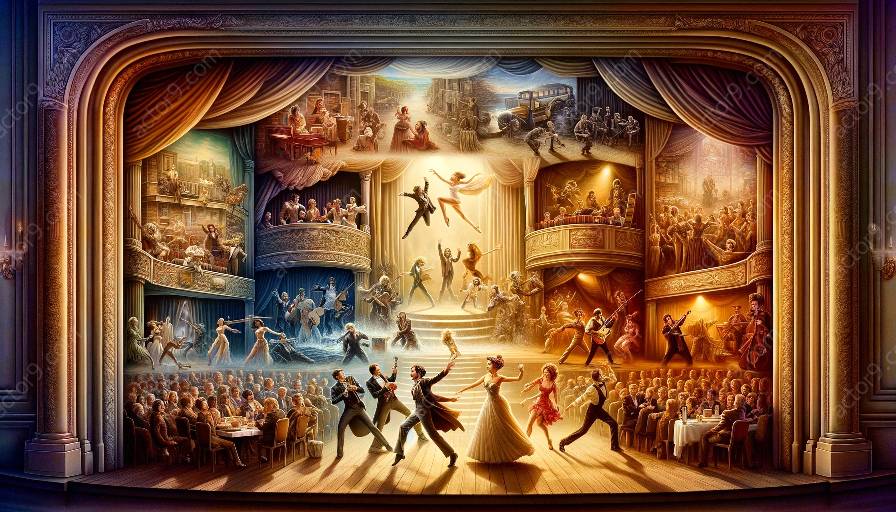Set design in musical theatre plays a crucial role in shaping the visual, storytelling, and emotional aspects of a production. It contributes to the overall artistic expression, setting the tone and atmosphere for the musical. The significance of set design is closely intertwined with different musical theatre styles and genres, impacting the audience's experience and the success of the production.
Impact on Musical Theatre Styles and Genres
Set design is an integral part of conveying the essence of different musical theatre styles and genres. For example, in traditional musicals, such as 'The Sound of Music,' the scenic design often reflects a realistic portrayal of the story's setting, with detailed backdrops and physical structures that transport the audience to a specific time and place. On the other hand, in contemporary and experimental musicals, set design may take an abstract or minimalist approach, using symbolic elements and non-literal representations to evoke emotions and themes.
The significance of set design extends to various genres within musical theatre, including comedy, drama, fantasy, and historical productions. Each genre demands distinct visual elements to enhance the storytelling and evoke the intended mood. Whether it's designing whimsical and colorful sets for a lighthearted comedy or creating grand, opulent designs for historical epics, set designers must adapt their artistic vision to align with the specific requirements of each genre.
Contributions to the Overall Theatrical Experience
Set design significantly contributes to the overall theatrical experience, shaping the audience's perception and emotional engagement. An intricately designed set can transport the audience to alternate realities, effectively immersing them in the world of the musical. It provides a visual context for the narrative, guiding the audience through different settings and locations and enhancing the storytelling by creating a believable and captivating environment.
Moreover, set design influences the dynamics of performance, providing actors with a physical space to interact and engage with the surroundings. The set becomes an active participant in the production, serving as a canvas for choreographed movements, scene changes, and dramatic moments. The integration of set design with choreography, lighting, and special effects transforms the stage into a dynamic and multifaceted space, enriching the overall theatrical composition.
Evolution of Set Design in Musical Theatre
Over time, the evolution of set design in musical theatre has embraced innovative technologies, materials, and concepts, expanding the creative possibilities for designers and directors. Advancements in scenic projection, automation, and digital imagery have revolutionized the way sets are conceptualized and realized, allowing for seamless transitions between different scenes and facilitating intricate visual effects.
Furthermore, the fusion of traditional craftsmanship with modern aesthetics has given rise to bold and inventive designs that push the boundaries of imagination. From elaborate mechanical sets to interactive and adaptable structures, the evolution of set design reflects the ever-changing landscape of musical theatre, where creativity and innovation converge to redefine the visual spectacles presented on stage.
Conclusion
The significance of set design in musical theatre cannot be overstated, as it serves as a cornerstone of artistic expression, storytelling, and sensory experience. By understanding its impact on different musical theatre styles and genres, we gain a deeper appreciation for the intricate relationship between visual design and theatrical performance. Set design not only enriches the aesthetic appeal of musical productions but also shapes the narrative, emotions, and dynamics that captivate audiences and define the essence of musical theatre.




































